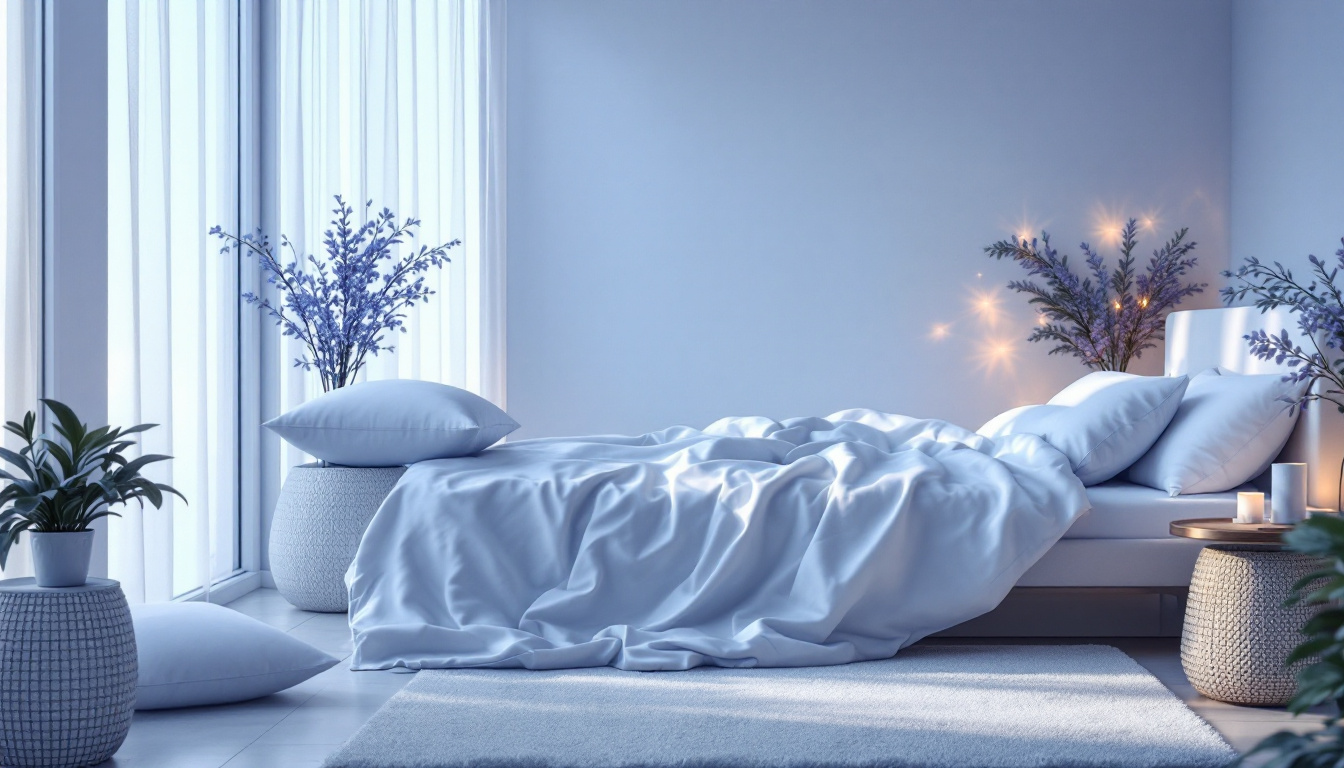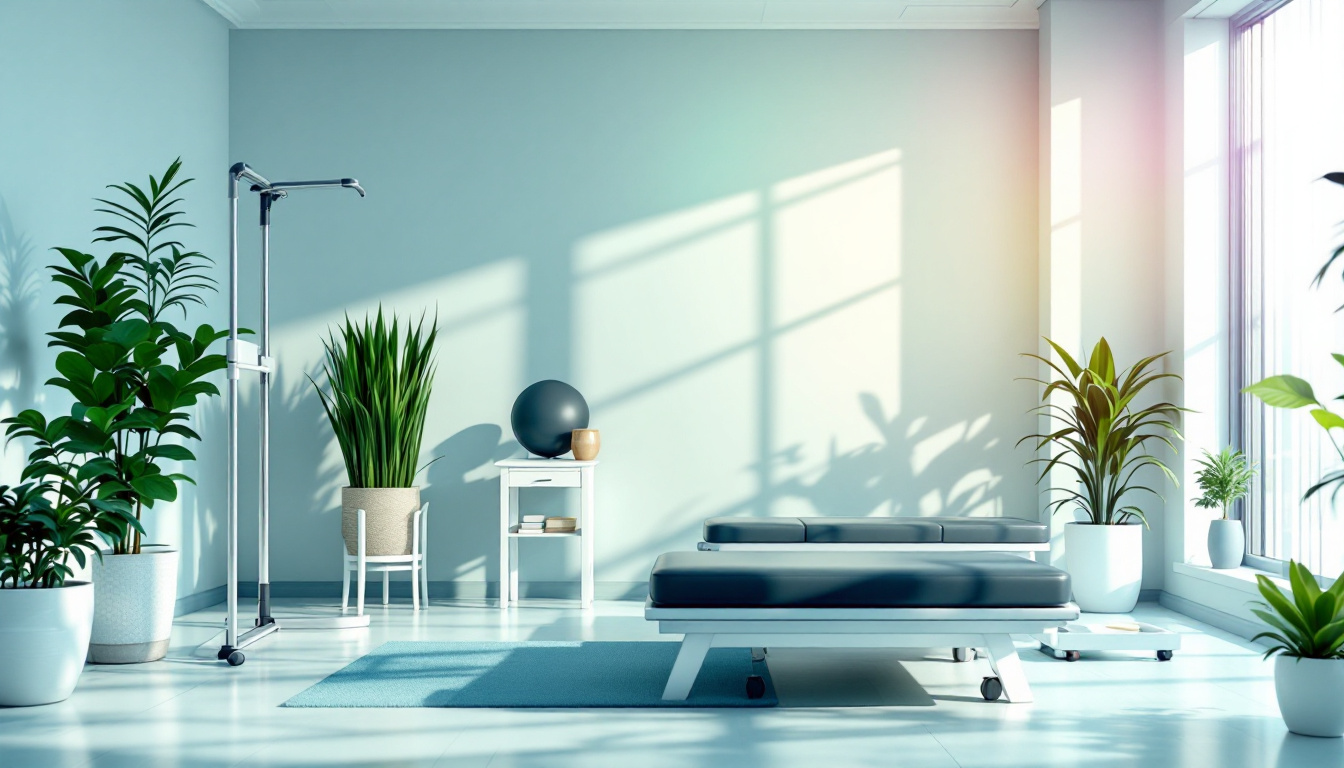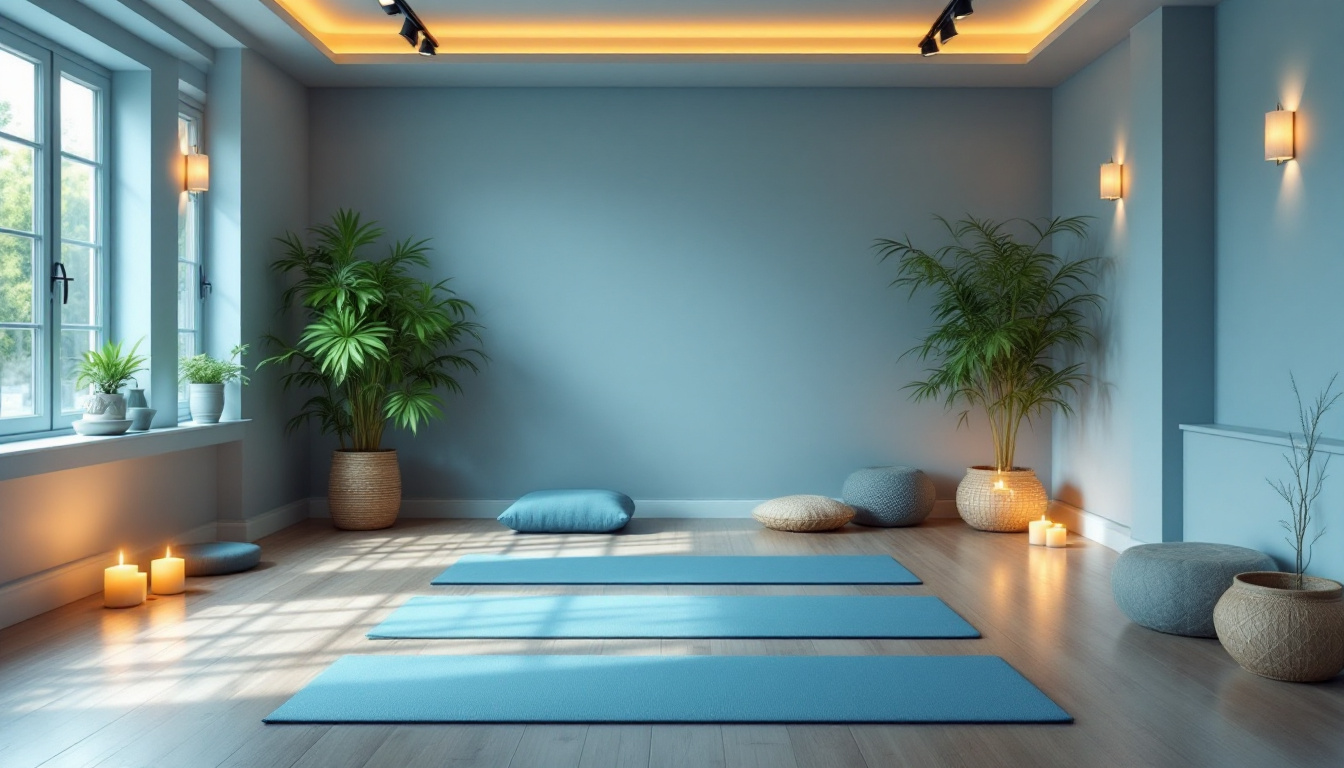How to develop a sleep hygiene routine
April 8, 2025
Unlocking the Secrets to a Successful Sleep Hygiene Routine


Introduction to Sleep Hygiene Routines
In our fast-paced modern world, the importance of establishing healthy sleep habits cannot be overstated. The quality of our nightly rest significantly affects our physical health, cognitive function, and emotional wellbeing. Sleep hygiene, the collection of practices that promote regular and restful sleep, is a cornerstone for optimal health. This article introduces the essential components of sleep hygiene, offering actionable insights for developing a routine that’s both effective and sustainable. We will delve into the benefits of sleep hygiene, practical tips for improvement, and how adhering to these practices can transform your nighttime rest.
Understanding Sleep Hygiene and Its Critical Role

What is sleep hygiene and why is it important?
Sleep hygiene refers to the habits and practices that promote restful and regular sleep. Developing good sleep hygiene is critical because it significantly impacts both physical and mental health. This encompasses a variety of strategies such as maintaining a consistent sleep schedule, creating a comfortable sleep environment, and managing stress effectively.
Good sleep hygiene can yield a number of important benefits. Here are some key points to consider:
- Enhanced Energy and Mood: Proper sleep hygiene leads to increased energy during the day, promoting a more positive mood and cognitive function.
- Cognitive Benefits: Improved sleep quality enhances concentration and memory, making it easier to engage in daily tasks and responsibilities.
- Health Risks Reduction: Consistent and quality sleep can lower the risk of chronic conditions such as hypertension, obesity, diabetes, and cardiovascular diseases.
Developing habits aligned with good sleep hygiene can also vary based on age. For adults, aiming for 7 to 9 hours of sleep is essential, while children and teens may need even more. It’s crucial to tailor sleep practices to individual needs to optimize overall well-being.
In summary, prioritizing sleep hygiene is essential for maintaining a healthy lifestyle, as it helps nurture emotional resilience and supports physical health. By focusing on creating a peaceful sleep environment and practicing routine habits, you can significantly enhance your quality of sleep and, by extension, your quality of life.
Practical Tips for Improving Your Sleep Hygiene

What are some practical tips for improving sleep hygiene?
Improving sleep hygiene is essential for achieving quality rest. Here are some effective strategies you can implement:
Maintain Consistent Sleep Schedules
- Aim to go to bed and wake up at the same time each day, including weekends. This helps to reinforce your body’s sleep-wake cycle, resulting in better sleep quality over time.
Create a Sleep-Friendly Environment
- Your bedroom should be a sanctuary for sleep. Keep the room cool (around 60-67°F or 15-19°C), dark, and quiet. Use blackout curtains, earplugs, or white noise machines to eliminate disturbances.
Manage Pre-Bedtime Diet and Substances
- Avoid heavy meals, caffeine, nicotine, and alcohol close to bedtime. It’s best to limit caffeine intake in the afternoon and choose lighter snacks if you’re hungry, spacing these at least three hours before sleep.
Limit Nap Times and Regular Exercise
- If you need to nap during the day, keep it short—ideally 20-30 minutes—and avoid napping late in the afternoon. Engage in regular physical activity, but try to schedule workouts at least a few hours before bedtime to prevent sleep disturbances.
Worry Management
- To ease stress, consider writing down thoughts or concerns before bed. This practice helps clear your mind, making it easier to settle into a restful state.
By implementing these practical strategies, you can create a conducive environment for sleep, promote relaxation, and ultimately enjoy more restorative nights.
Decoding the 10-3-2-1-0 Rule for Better Sleep

What is the 10 3 2 1 rule for better sleep?
The 10-3-2-1-0 rule is a practical framework aimed at optimizing sleep quality by establishing a timeline for ceasing certain activities that can negatively impact rest. The first component of this method encourages individuals to stop consuming caffeine at least 10 hours before bedtime. Caffeine is a known stimulant that can hinder the natural onset of sleep by blocking adenosine receptors, which play a vital role in promoting drowsiness.
Following that, it recommends refraining from eating any food or drinking alcohol 3 hours prior to going to bed. Doing so can help prevent digestive problems and reduce the likelihood of nighttime awakenings due to discomfort.
Next is the advice to cease all work-related tasks 2 hours before sleep. This step is crucial for winding down and reducing stress, allowing the mind to enter a restful state. Lastly, it emphasizes shutting down all screens 1 hour before bedtime, aiming to diminish exposure to blue light that can disrupt the production of melatonin, the hormone responsible for regulating sleep.
Finally, the rule advocates for avoiding the use of the snooze button, which can disrupt sleep cycles and lead to increased grogginess upon waking.
Steps involved and their significance
The key steps of this rule each tackle various factors affecting sleep:
| Time Frame | Action | Significance |
|---|---|---|
| 10 hours | Stop caffeine | Reduces stimulation that blocks sleep |
| 3 hours | Avoid food/alcohol | Prevents discomfort and sleep disruptions |
| 2 hours | Stop working | Helps ease stress and signal wind-down |
| 1 hour | No screens | Minimizes blue light exposure |
| 0 snoozes | No snooze button | Prevents disruption in sleep cycles |
By following these steps, individuals can better prepare their minds and bodies for restful sleep.
Impact of this rule on sleep quality
Implementation of the 10-3-2-1-0 rule can lead to a noticeable improvement in sleep quality. By creating a structured routine around bedtime, individuals often experience:
- Deeper and more restorative sleep due to reduced stimuli and digestive discomfort.
- Easier sleep onset, as the body naturally begins to wind down.
- Enhanced mood and energy levels throughout the day from improved sleep efficiency.
Overall, the rule serves as a guide for establishing healthier sleep habits that contribute holistically to physical and mental well-being.
Steps to Establish a New Sleep Routine

How can I establish a new sleep routine?
To establish a new sleep routine, consistency is crucial. Aim to go to bed and wake up at the same time every day, even on weekends. This helps regulate your body's internal clock and reinforces sleep patterns. Adults typically need between 7 to 8 hours of quality sleep each night to function optimally.
Creating a calming bedtime environment
Creating a tranquil environment can significantly enhance your sleep quality. Ideally, your bedroom should be dark, cool (between 60°F - 67°F), and quiet. Consider using heavy curtains or blackout blinds to block outside light and minimize noise with earplugs or white-noise machines. Additionally, reserve your bed for sleep and intimacy only, which can strengthen mental associations with sleep.
Tips for improving sleep onset
Engaging in relaxing activities prior to bedtime can help signal your body that it's time to wind down. Activities like reading in low light, taking a warm bath, or practicing deep breathing techniques are ideal. Avoid stimulating activities and screens at least 30 minutes before sleep, as the blue light emitted by devices can interfere with melatonin production. If you're unable to fall asleep after 20 to 30 minutes, get out of bed and partake in a quiet, non-stimulating activity until you feel sleepy, which will assist in promoting restful nights.
Implementing the 3 S's of Sleep Hygiene
What are the 3 S's of sleep hygiene and why are they important?
The 3 S's of sleep hygiene refer to Sleep, Sickness, and Sex. These activities should ideally only take place in your bed, creating a strong association with sleep. This vital connection helps establish a healthy sleep routine and reinforces the idea that your bed is a sanctuary for rest.
- Sleep: This is the primary purpose of your bed, and associating it only with sleeping helps signal to your brain that it’s time to wind down.
- Sickness: While it’s not ideal to be sick, creating an association between rest and recovery in bed aids in understanding that your bed is a place for recuperation.
- Sex: Having this intimate activity associated with your bed strengthens the idea that your bed is meant for relaxation and closeness, further promoting comfort.
Promoting these associations also involves creating a tranquil environment and sticking to a consistent schedule. Doing so signals your body when it’s time to transition into sleep mode.
Why are these activities important for sleep health?
Establishing the 3 S’s enhances sleep quality by encouraging behaviors that foster better rest. When your bed is solely linked to sleep and intimate moments, your brain learns to associate it with relaxation. This mental association can significantly improve how quickly you fall asleep and the overall depth of your sleep. Furthermore, good sleep hygiene is essential since inadequate sleep impacts memory, concentration, and overall well-being, potentially leading to long-term health issues.
Building mental associations for better rest
Strengthening these mental associations requires regular routines and mindful practices. For instance, avoiding other activities like watching TV or working in bed can help reinforce that your bed is solely for rest. Coupling your bedtime with relaxing activities—such as reading or deep breathing—can further assist in preparing your mind and body for sleep. This holistic approach to the 3 S's promotes a healthier sleep environment, which is essential for maintaining optimal mental and physical health.
Creating an Ideal Sleep Environment

Optimal Bedroom Temperature and Lighting
Creating a sleep-friendly environment starts with the right temperature and lighting. Keeping your bedroom cool, ideally between 60 and 67 degrees Fahrenheit (15 to 19 degrees Celsius), promotes better sleep quality. Moreover, a dark atmosphere is essential for enhancing melatonin production, which facilitates falling asleep. Consider using blackout curtains or sleep masks to block out intrusive light.
The Role of Comfortable Bedding and Noise Control
Investing in a quality mattress and pillows tailored to your sleep preferences can significantly impact your comfort level during the night. Additionally, minimizing noise through soft furnishings or earplugs can help prevent disturbances. Heavy curtains can reduce external sounds, creating a serene space conducive to restful slumber.
The Impact of a Dedicated Sleep Space
To strengthen the mental association between your bed and sleep, use your sleeping area solely for sleep and intimacy. This practice helps signal to your brain that the bed is meant for rest. By limiting activities like watching TV or working in bed, you can enhance your body’s relaxation response, paving the way for better sleep hygiene.
| Aspect | Recommendations | Benefits |
|---|---|---|
| Temperature | 60-67°F (15-19°C) | Promotes better sleep quality |
| Lighting | Use blackout curtains or sleep masks | Enhances melatonin production |
| Bedding | Quality mattress and pillows | Increases comfort and supports restful sleep |
| Noise Control | Use heavy curtains or earplugs | Reduces disturbances for uninterrupted sleep |
| Dedicated Sleep Space | Only use bed for sleep and intimacy | Strengthens mental associations for relaxation |
The Role of Relaxation Techniques in Sleep Hygiene
Benefits of Deep Breathing, Meditation, and Mindfulness
Relaxation techniques such as deep breathing, meditation, and mindfulness play a crucial role in enhancing sleep hygiene. These methods help calm the mind, reduce anxiety, and prepare the body for a restful night. Practicing deep breathing exercises, for instance, can lower heart rates and relieve tension, promoting a state of relaxation beneficial for sleep.
Incorporating Relaxation into Bedtime Routines
Incorporating relaxation into your bedtime routine is essential for signaling to your body that it's time to wind down. Engaging in calming activities such as gentle stretching, reading, or listening to soft music can significantly improve sleep readiness.
A warm bath or shower can also serve as a soothing transition towards sleep, especially when taken an hour or two prior to bedtime.
Techniques to Reduce Pre-sleep Stress
To effectively reduce pre-sleep stress, consider techniques like journaling, where you jot down worries or thoughts before settling down. Visualization exercises, where you imagine peaceful and relaxing scenarios, can also aid in easing a racing mind. Limiting screen time from electronic devices at least 30 minutes before bed is essential as well, to prevent mental stimulation that interferes with sleep onset.
Ultimately, these relaxation strategies can make a significant difference in achieving better quality sleep.
Nurturing Sleep Hygiene Across Different Age Groups
Adjusting Sleep Routines for Children, Teens, and Adults
Creating age-appropriate sleep routines is essential for optimizing sleep hygiene. Children aged 3-5 need about 10-13 hours of sleep, while teens should aim for 8-10 hours. For adults, the recommended amount is 7-9 hours. Each age group benefits from consistent bedtimes that reflect their unique needs, ensuring their bodies can rejuvenate effectively.
Family-wide Sleep Hygiene Practices
Incorporating sleep hygiene practices as a family fosters healthier habits together. This can include setting a regular bedtime for everyone, limiting electronic devices in bedrooms, and engaging in calming activities as a family before sleep, like reading or practicing relaxation techniques.
Importance of Age-Appropriate Sleep Durations
Age-appropriate sleep durations are crucial to overall health. Insufficient sleep can lead to issues such as anxiety in teens and decreased academic performance in children. Adults lacking sleep may face increased health risks. Prioritizing adequate sleep for all family members helps ensure everyone's well-being.
Conclusion: Your Path to Better Sleep
Developing a sleep hygiene routine is an investment in your health, akin to a balanced diet and regular exercise. By prioritizing sleep, you not only enhance your physical health but also improve cognitive functions, mood stability, and overall productivity. Implementing a consistent sleep schedule, creating a sleep-friendly environment, and adopting pre-sleep relaxation techniques are practical steps to take. Remember, small adjustments in your daily habits can make a significant difference in your sleep quality. As you embark on this journey to better sleep, cherish each night of restful slumber as a stepping stone towards a healthier, more vibrant life.
References
- Mastering Sleep Hygiene: Your Path to Quality Sleep
- Sleep hygiene: Simple practices for better rest - Harvard Health
- [PDF] Sleep Hygiene - Centre for Clinical Interventions
- Sleep Hygiene: 7 Tips for a Better Bedtime Routine
- Fall asleep faster and sleep better - Every Mind Matters - NHS
- Sleep tips: 6 steps to better sleep - Mayo Clinic
- Sleep Hygiene Tips - Headspace
- About Sleep - CDC
- Sleep hygiene: Tips and habits checklist - Medical News Today
- Sleep Hygiene: Good Sleep Habits - Sleep Health Foundation


























































.jpeg)











































































































































































































.avif)























































.jpeg)

































































.jpeg)














.jpg)









































.jpeg)









































































.avif)




.avif)

















































.avif)







































































































































































